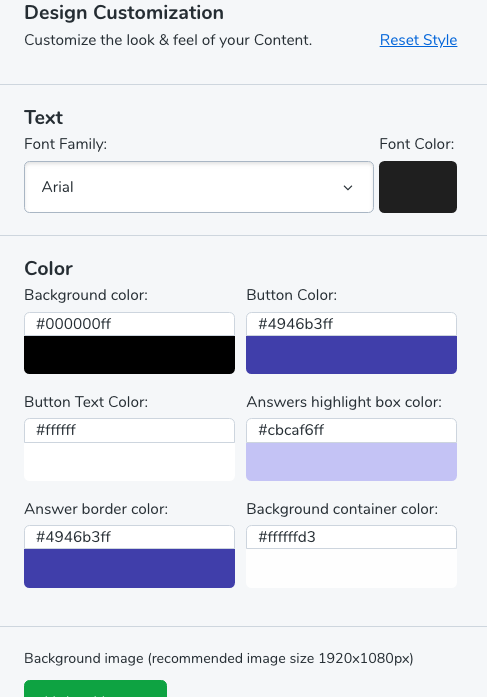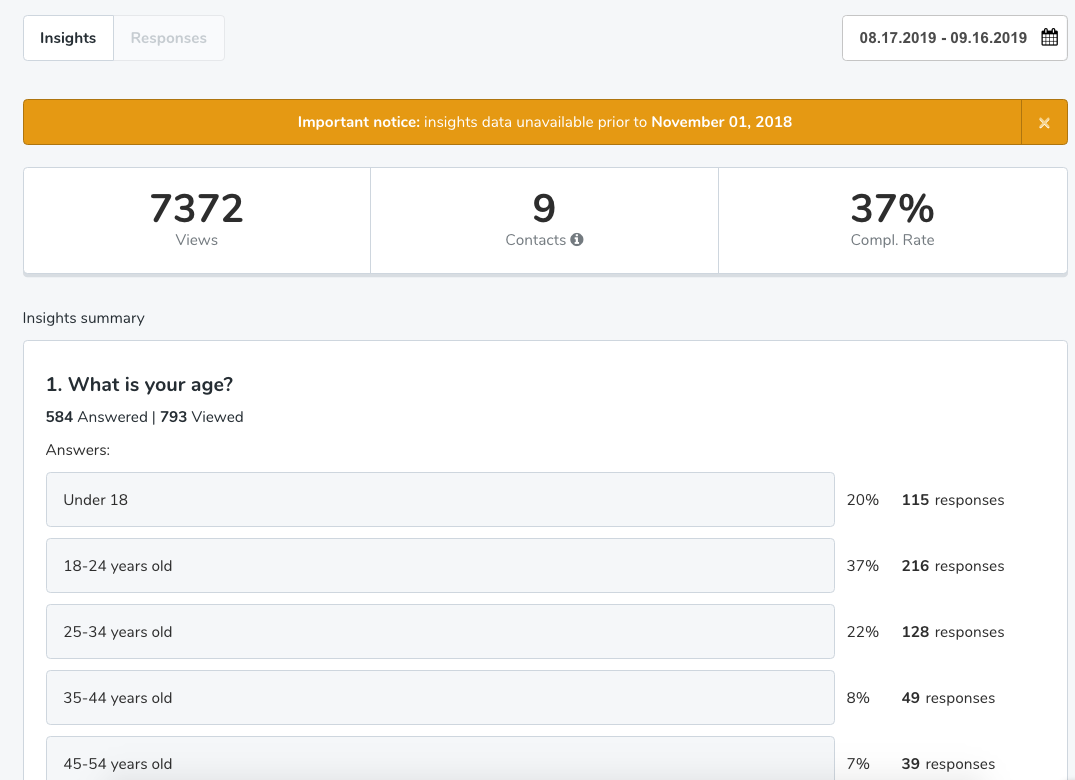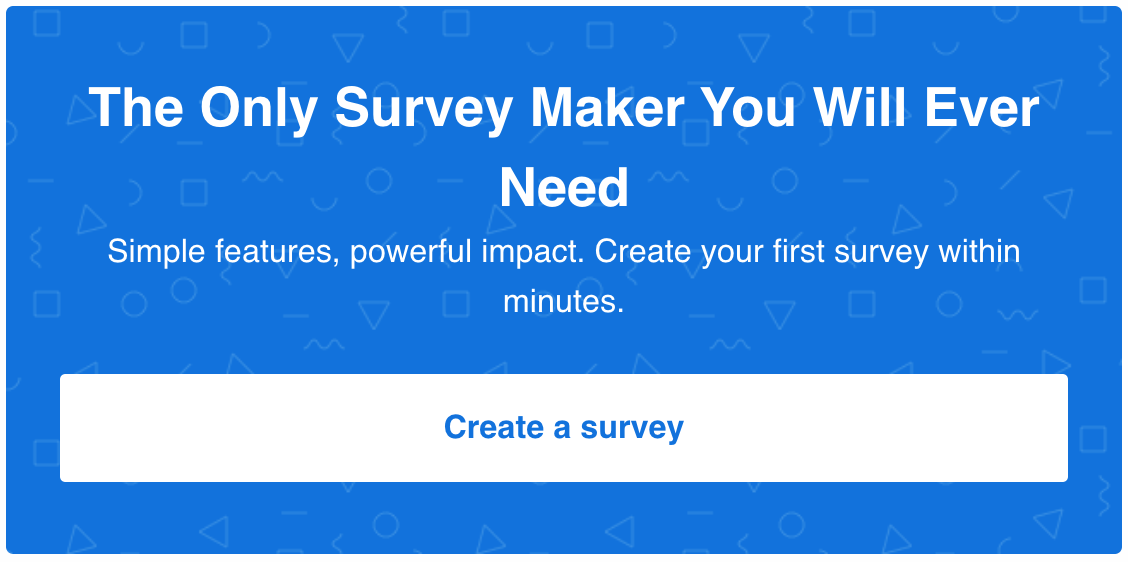Survey vs questionnaire – wait… aren’t those two the same thing?
Even though many people have been using the two terms interchangeably, they’re not.
But don’t worry, even professional researchers are making the same mistake. That’s why I’m going to try to untangle the confusion and explain the difference between the two in this post. Survey vs questionnaire – which one should you use and why?
Survey vs Questionnaire: Definitions
In the simplest of terms, a questionnaire is a written set of questions.
A survey, on the other hand, includes not only the set of questions but also the process of collection, aggregation, and analysis of the responses to the questions.
While questionnaire refers only to the content (questions), survey is a broader concept that, in addition to content, entails method and analysis as well.


If you simply need to collect data from a pre-determined set of questions – use a questionnaire. In case you want to gather data and use it to look for trends, behavior patterns, or any kind of a bigger picture, and turn it into a statistical analysis of sorts – you’d want to conduct a survey.
Again, put in simple terms, a questionnaire is just one part of a survey and refers to a (usually written) list of questions.
An example of a questionnaire
To make things a bit clearer, here’s an example of a questionnaire*.
*To access the template, just create an account (or login), and then select a template from our builder.
The auto insurance quiz above is just a set of various multiple-choice questions related to the taker’s knowledge of auto insurance.
It requires the takers to answer a list of specific auto insurance questions in a way that’s not designed to offer deeper analysis and look for trends. It’s simply designed to gather information.
An example of a survey
And here’s an example of a survey*.
*To access the template, just create an account (or login), and then select a template from our builder.
This demographic survey is designed with a goal to gather information about your target audience, use it to segment the audience, and analyze the responses so as to uncover trends and create statistics.
Unlike a questionnaire, a survey lets you dig deeper and learn more about your target audience. Surveys can serve a multitude of purposes – you can learn more about a particular demographics, do market research, find out the general employee satisfaction levels, or learn how to make better hires.
How to create a good questionnaire
The answer is quite simple – write good survey questions. What makes any questionnaire good are the questions themselves.
That being said, here are a few tips on how to write quality survey questions:
1. Get the number of questions right
Creating a quality questionnaire is often based on trial and error, but getting the number of questions right can be essential for a decent completion rate.
An average questionnaire taker is unlikely to devote more than a couple of minutes to answering your questions, so keep that in mind when creating a questionnaire.
The exact right number of questions in difficult to nail down as it depends on the topic and goal of your questionnaire, but a general rule of thumb is to be careful not to overwhelm the takers. That being said, anywhere between 8 and 15 questions might be optimal for most purposes.
Of course, some questionnaires may require 20+ questions, while others can include just a single question – like our NPS (Net Promoter Score) survey.
2. Keep your questions on-topic
This should go without saying, but still, many questionnaire makers make this mistake. Unless you’re making one of those funny (but ridiculous) Buzzfeed-style quizzes, asking about one’s favorite brand of cereals in a questionnaire about the quality of public transport in your city is unpurposeful and deceiving.
3. Keep your questions short and precise
If there’s something we can learn about questionnaires and surveys (and that’s what we do), it’s that the respondents like the questions short and sweet. Answer options should be the same. People like short questions because it only takes a matter of seconds to go over them.
Furthermore, there should be no confusion or ambiguity whatsoever about the meaning of both questions and answer options. Otherwise, you risk introducing bias into your research.
4. Use everyday language
Of course, the language you use in your questionnaire mainly depends on your target audience. For example, if you’re surveying the British royal family on the quality of life in Buckingham Palace, you’re going to use the most formal language there is.
If, on the other hand, you’re surveying a bunch of Average Joes, you should generally aim to use everyday language with no fancy expressions, industry-relevant terms, and uncommon idioms. The main goal of any questionnaire is to collect accurate information. In order to do so, you need to make sure your audience fully understand what they’re being asked.
As already stated, any list of questions can be considered a questionnaire. And a questionnaire is an integral part of any survey. But how exactly do you take a questionnaire and turn it into a survey? Let’s expand a bit on our survey vs questionnaire dilemma.
How to turn a good questionnaire into a powerful survey
Use a custom design
While a questionnaire is usually a blank piece of paper with a set of questions and answer options listed one after another, a survey can have a much more customized and personalized look.
The LeadQuizzes survey maker, for example, lets you fully customize your survey design. You can add images and videos, change fonts and colors, add your own branding or keep the LeadQuizzes one, use different answer options (such as multiple-choice, image answers, dropdown and form field answers, and more), show a personalized result or thank you page, and much more.


Make it easily accessible
As we live in a digital world, you need to make sure your survey is available to be filled out online. If you’re using LeadQuizzes survey maker, you can easily integrate with some of the most popular apps and services, embed your survey to your website, send it via email, and share on Facebook or other social media.
Prepare for data analysis
Once you’ve used your questionnaire to obtain data, it still doesn’t mean a thing unless you analyze it, right?
LeadQuizzes surveys come equipped with a powerful reporting and analysis functionality. All of the reports can be exported to Google Sheets or accessed directly from your account dashboard. This means that you can easily browse, filter and sort all the responses you’ve received.


More importantly, it enables you to do more complex statistical analysis and make more informed business decisions.
Conclusion
Ultimately, I don’t think this should be a question of “survey vs questionnaire”. It all comes down to whether your particular needs call for a simple data collection (in which case a bare questionnaire would suffice) or you need to “persuade” people to answer your questions and plan to do a more complex analysis od the obtained data (in which case, a survey would be a better solution).
If you’re looking for inspiration or want a ready-made solution for your surveys and questionnaires, feel free to browse our database of survey templates. To access the templates, just log in to your LeadQuizzes account (or create a FREE one if you don’t have it yet).
